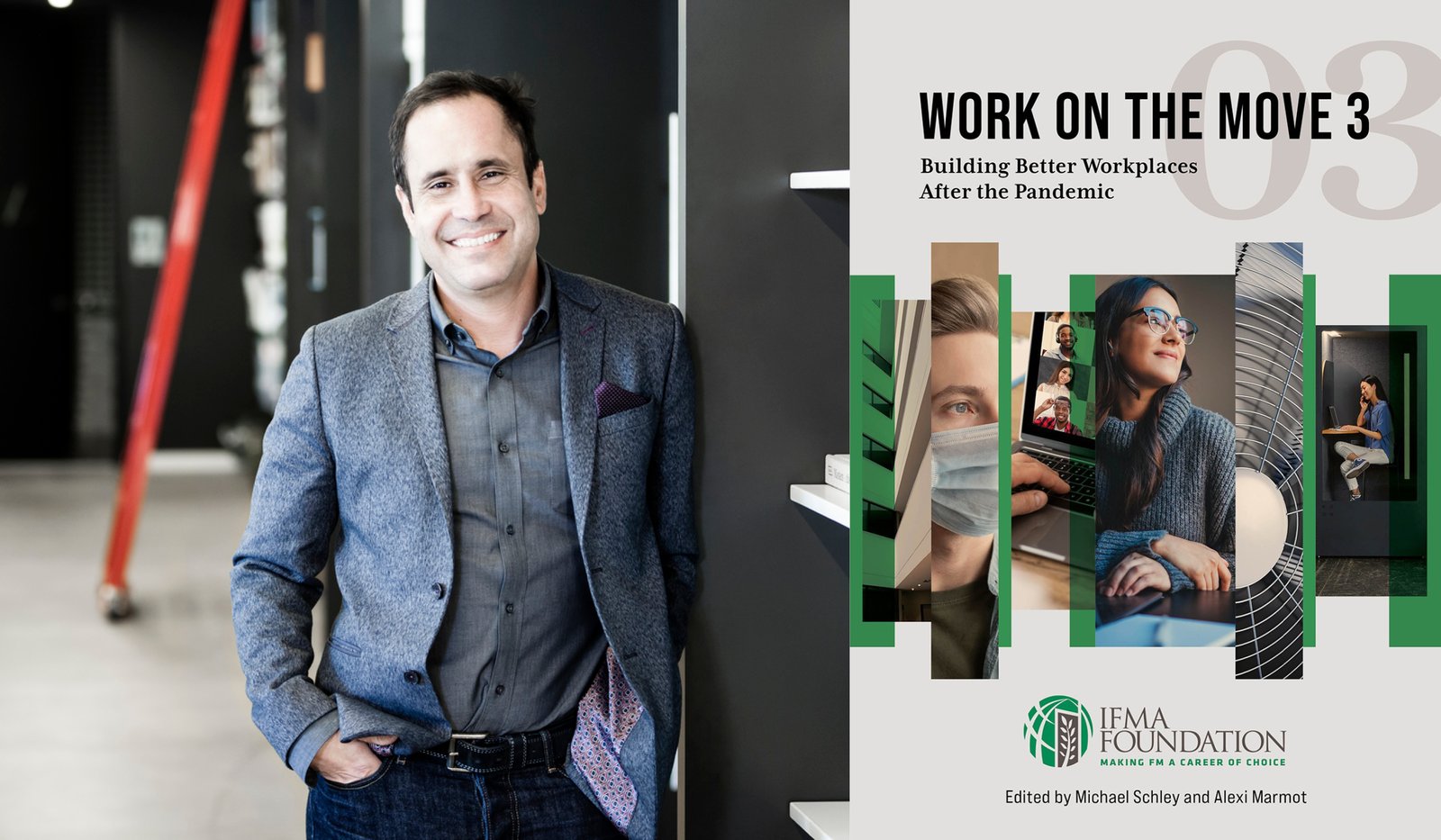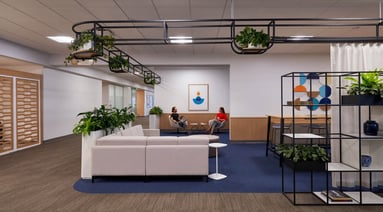
Albert DePlazaola, Senior Principal, Strategy, Americas along with Arnold Levin, Southwest Regional Strategy Director for Gensler contribute their expertise in people-centered design and change strategies to IFMA’s 3rd edition of Work on the Move, discussing workplace design in a post-pandemic world.
The workplace as a verb
The increasing popularity of the hybrid workplace as a solution to the disruptions of the global pandemic has left many organizations questioning how to enable their teams to work virtually as well as in the physical office. In this new age of work, design has transitioned from a noun to a verb, helping organizations respond to the changing needs of their business by creating environments that foster safe, productive, and enjoyable experiences for employees.
This means design strategies will need to redefine the meaning of work and place. It’s caused a fundamental shift in the role of the workplace and sparked the necessary discussion of what it should be like returning to the physical workspace, office capacity, and where work could and should take place.
Reimagining work and workspace can be broken down into four steps:
- Reconstruct how work is done
- Decide ‘people-to-work’ or ‘work-to-people’
- Redesign the workplace to support organizational priorities
- Realize the footprint creatively
Reimagining the workplace and organizational design
Traditionally, organizations have tried to build predictability into their office design to help them meet their business goals while futureproofing for unknown disruptions. The pandemic was an unknown, unanticipated disruption impacting office space at a shattering magnitude. It has required organizations and designers to look beyond conventional workplace design to strategies and trends with an increased awareness of how work is going to be redefined, the role of organization, health and wellness, and place.
As organizations strategize their RTO (return to office), they need to rethink work, what can be done virtually, and the purpose of the office. The post-pandemic workplace will need to reflect shifts in organizational models as well as accommodate the changes in role and function of the physical office. This has caused leaders to look more closely at their organizational design so they can successfully transition to agile working strategies.
The red pill and the future of the work environment
In the past, change and conformity drove the workplace experience; organizations looked for processes that were reliable, consistent, and encouraged work practices that supported the bottom line. Fast forward to March 2020, and like the scene in The Matrix when Neo take the red pill and sees the world for what it “really is”, we all were welcomed to the desert of the real.
What we found in this desert of the real was a collective draw of empathy, virtual humanism, and a sense of community – we’re all in this together. The question now is, how can we recreate those human experiences and emotions from remote workplace in the physical workplace? The answer could lie in a common activity, play.
Play in the workplace
Play replaces traditional hierarchy with equity driven by human emotion, curiosity, vulnerability, skill, and access. Take, for example the Venice Boardwalk. It is a melting pot of people watching, having fun, experimenting, learning, and playing. Integrating play and work in the workplace design recreates the behaviors and emotions we found in remote working, while transforming the physical space into an organizational asset.
Putting it all together
If we want to encourage play, achieve results, and incentivize employees to come back to the workplace, the traditional office isn’t going to cut it. Instead, a new “kit of parts” is needed:
- Kinesthetic – Spaces for ideation around products and services
- Visual – Immersive spaces to communicate ideas with visual language
- Acoustic – Forum spaces to share and listen
- Flow – Spacing providing respite
When translated into design, this kit of parts creates a functional space focused on the human experience and learnings from the pandemic. It provides us with the “red pill real” for the future workplace; a fundamental shift in what and where work is done, and ultimately redefining and reimaging the role of the physical office.
Designing for the future
In many ways, designing the post-pandemic workplace is about redefining work and how to keep people engaged. We’ve learned most focus work can be done anywhere, but the role of the physical workplace is to collaborate, learn, and ideate with colleagues and clients. It’s brought to the forefront the importance of creating spaces that are flexible, provide choice, and can more easily navigate future disruptions.
The five fundamental areas of focus:
- Ubiquitous technology
- A hybrid workplace model
- Designing neighborhoods for choice and safety
- Activity Based Work strategies
- Rethinking the function of the physical workplace
In this new paradigm of work environment, companies and designers have an opportunity to challenge the “blue pill” models and realize the full potential of organizational design and workplace design.
Read more in FMJ's Jan/Feb issue
Read Buildings and Cities review


